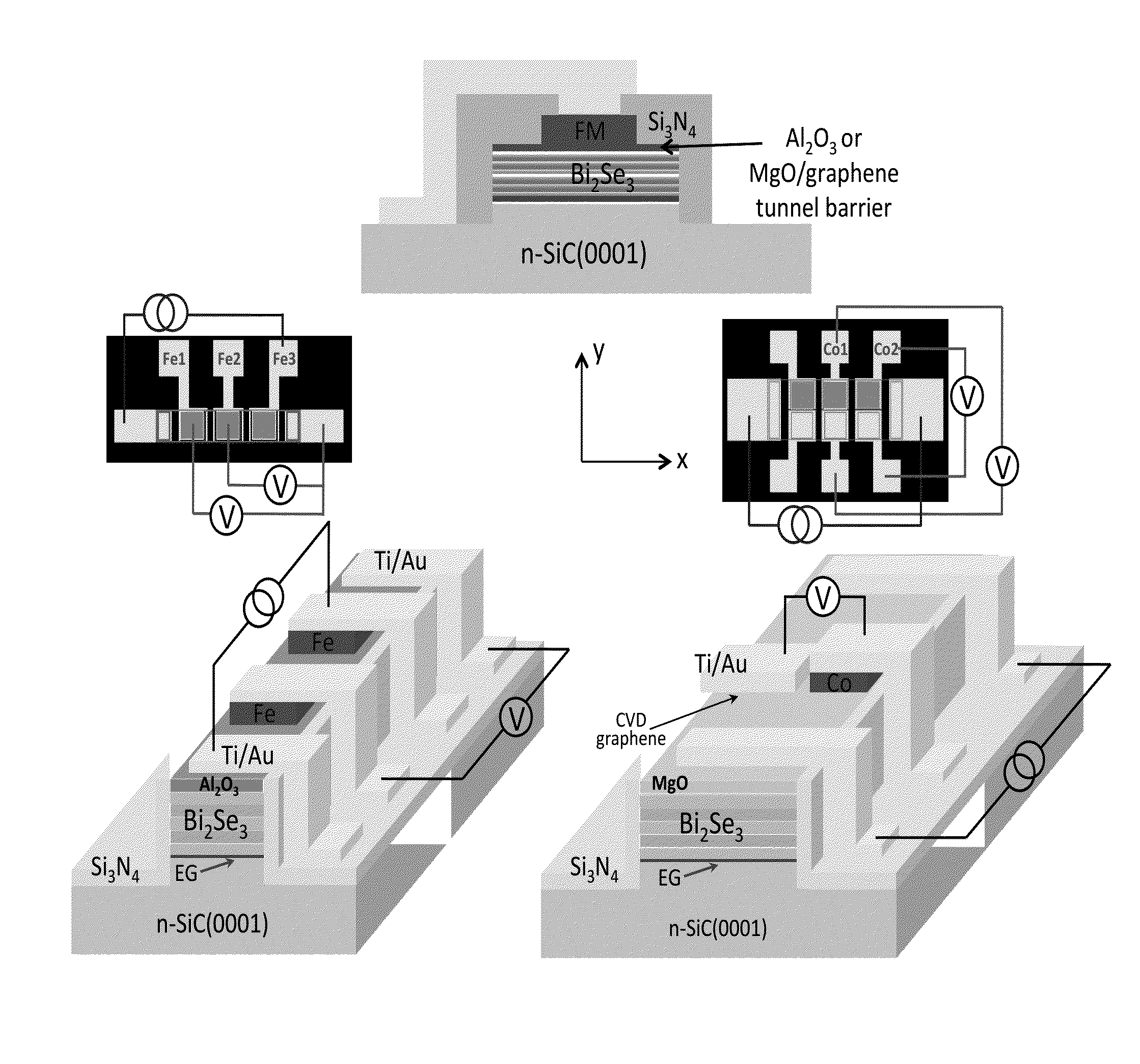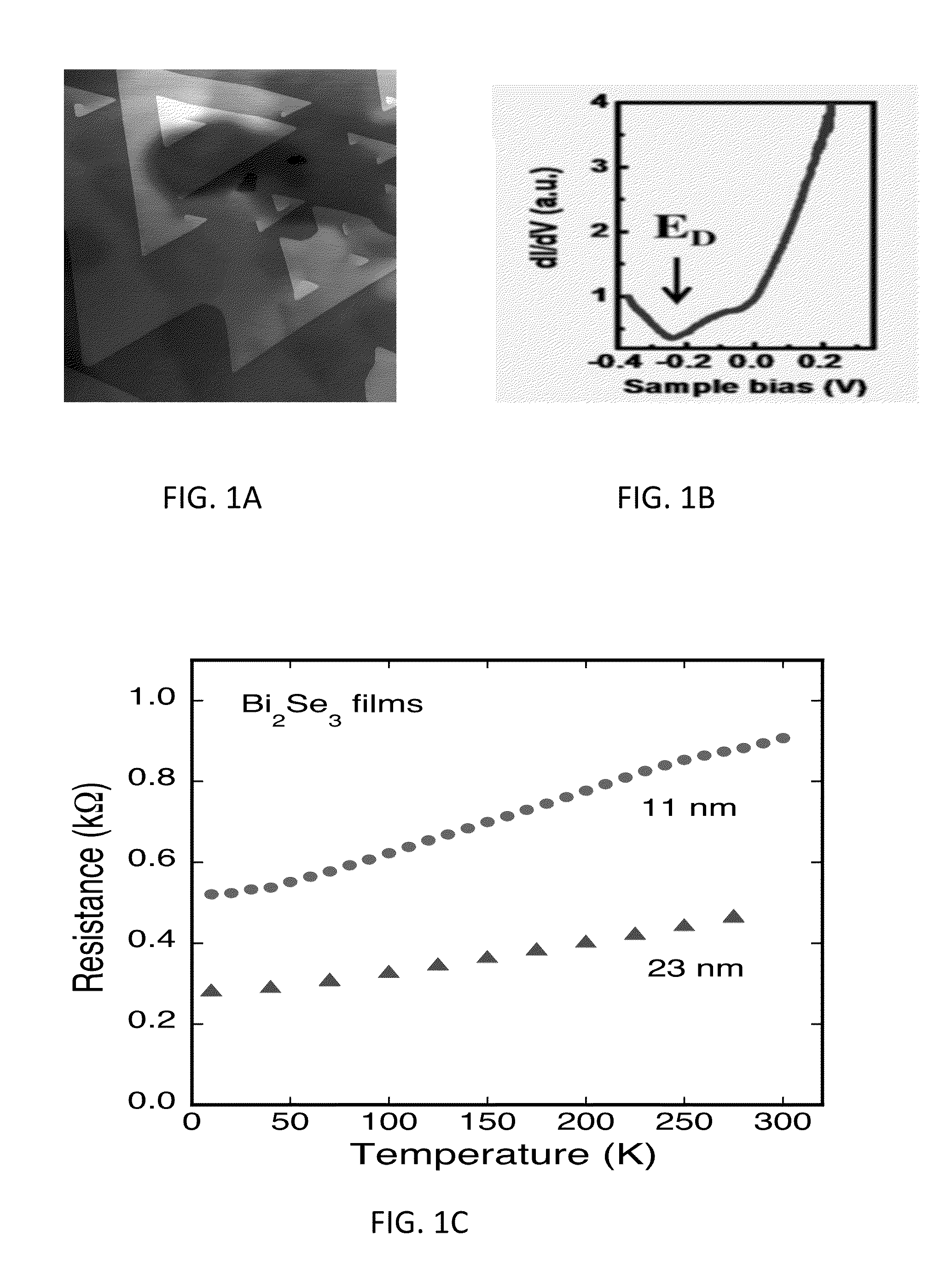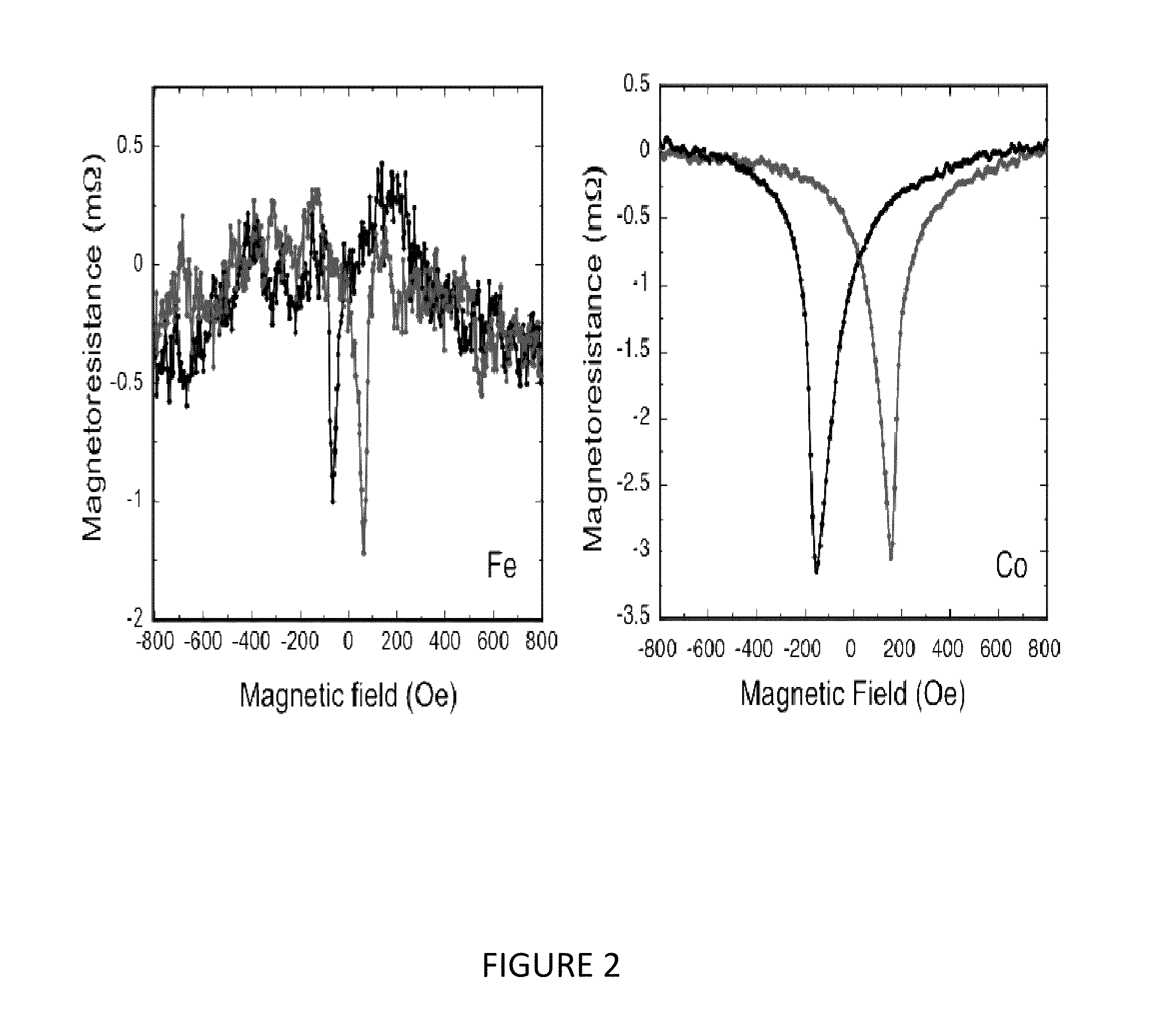Direct Electrical Detection of Current-Induced Spin Polarization Due to Spin-Momentum Locking in Topological Insulators
- Summary
- Abstract
- Description
- Claims
- Application Information
AI Technical Summary
Benefits of technology
Problems solved by technology
Method used
Image
Examples
example 1
[0024]Briefly, single-crystalline Bi2Se3 thin films are grown by molecular beam epitaxy (MBE). The ferromagnet / oxide tunnel barrier contacts are then grown on top of the Bi2Se3 in separate deposition systems. The samples are then patterned into electrically addressable test structures.
[0025]In situ scanning tunneling microscopy (STM) imaging and tunneling microscopy is used to monitor surface morphology and electronic structure and ensure optimal layer-by-layer spiral growth (FIG. 1) during MBE and film quality (before ferromagnetic / oxide tunnel barrier growth). The as-grown Bi2Se3 film exhibits a Dirac point (ED) 250 meV below the Fermi level in tunneling spectra, indicating n-type doping typically seen in MBE grown materials due to Se vacancies. The as-grown films exhibit n˜1019 / cm3 electron doping, with the Fermi level well within the bulk conduction band, as evident from the metal-like temperature dependent resistance (FIG. 1).
example 2
Deposition of Ferromagnet (FM) / Tunnel Barrier Contact
[0026]Two types of FM / tunnel barrier detector contacts are demonstrated as spin sensitive probes. Such contacts have successfully enabled electrical detection of spin current and accumulation in both semiconductors and metals.
[0027]Fe / Al2O3 contacts are deposited on air-exposed Bi2Se3 surface in a separate MBE system as follows. A 0.7 nm layer of polycrystalline Al was first deposited by MBE, and then oxidized in 200 Torr O2 for 20 min in the presence of UV light in the load-lock chamber. This step was then repeated for a total Al2O3 thickness of 2 nm. The sample was then transferred under ultra high vacuum to an interconnected metals MBE chamber, where 20 nm of polycrystalline Fe was deposited at room temperature from a Knudsen cell.
[0028]The oxide tunnel barrier is essential to prevent potential direct magnetic exchange with the TI surface states, interdiffusion between TI and FM which may result in undesirable alloy formation a...
example 3
Sample Fabrication
[0032]The samples were processed into the device structures illustrated in FIG. 3 to enable transport measurements. Standard photolithography and chemical etching methods were used to define the Fe contacts, which ranged in size from 10×10 μm2 to 80×80 μm2, with adjacent contact separation ranging from 45 to 200 μm. Ion milling was used to pattern the Bi2Se3 mesa.
[0033]Large Ti / Au contacts were deposited by lift-off in an electron beam evaporator as non-magnetic reference contacts and bias current leads. The Fe contacts were capped with 10 nm Ti / 100 nm Au, and bond pads for wire bonded electrical connections are electrically isolated from the Si using 100 nm of Si3N4.
PUM
 Login to View More
Login to View More Abstract
Description
Claims
Application Information
 Login to View More
Login to View More - R&D
- Intellectual Property
- Life Sciences
- Materials
- Tech Scout
- Unparalleled Data Quality
- Higher Quality Content
- 60% Fewer Hallucinations
Browse by: Latest US Patents, China's latest patents, Technical Efficacy Thesaurus, Application Domain, Technology Topic, Popular Technical Reports.
© 2025 PatSnap. All rights reserved.Legal|Privacy policy|Modern Slavery Act Transparency Statement|Sitemap|About US| Contact US: help@patsnap.com



